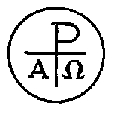
FAIR is a non-profit organization dedicated to providing well-documented answers to criticisms of the doctrine, practice, and history of The Church of Jesus Christ of Latter-day Saints.
| Answers portal |
| God |

|
|
Mainstream Christian critics claim that the Mormon doctrine of the Godhead and belief in theosis are not compatable with multiple statements in Isaiah that "beside [the Lord] there is no God." These passages include Isaiah 43꞉10-11; Isaiah 44꞉6,8; Isaiah 45꞉5-6; Isaiah 45꞉21-22; and Isaiah 46꞉9-10.
Context is critical to understanding these passages. In this portion of Isaiah Jehovah warned Judah to trust in him alone and not to trust in false gods who had no power to deliver them. The passages portray this as a contest between Jehovah and the gods of other nations.
Consider the passage in 43:10–11, where the Lord says
The context is clear in verse 12, which is typically omitted from the quotation:
"Strange god" refers to a false god, an idol.
Likewise for 44:6, 8 — this passage is followed by extensive discussion of "graven images" (Isaiah 44꞉9-17).
The passages in Isaiah cannot be called upon to disprove LDS beliefs in separate Gods in the Godhead or theosis. The point of them is to encourage Israel to leave off their idols and worship Jehovah alone. Any other use of them distorts Isaiah's meaning and intent.
Keith L. Sellers, “Why did Isaiah write that the Lord said ‘Beside me there is no God’ and ‘There is none beside me’ (Isa. 44:6; Isa. 45:21) when there are three personages in the Godhead?” Ensign, December 1989, ---.

FAIR is a non-profit organization dedicated to providing well-documented answers to criticisms of the doctrine, practice, and history of The Church of Jesus Christ of Latter-day Saints.
We are a volunteer organization. We invite you to give back.
Donate Now